How to save a man who fell overboard?
Each boat with different parameters provides for its own ways to solve certain problems. For example, there are some specifics if we consider the system of actions in a “man overboard” situation on different boats.
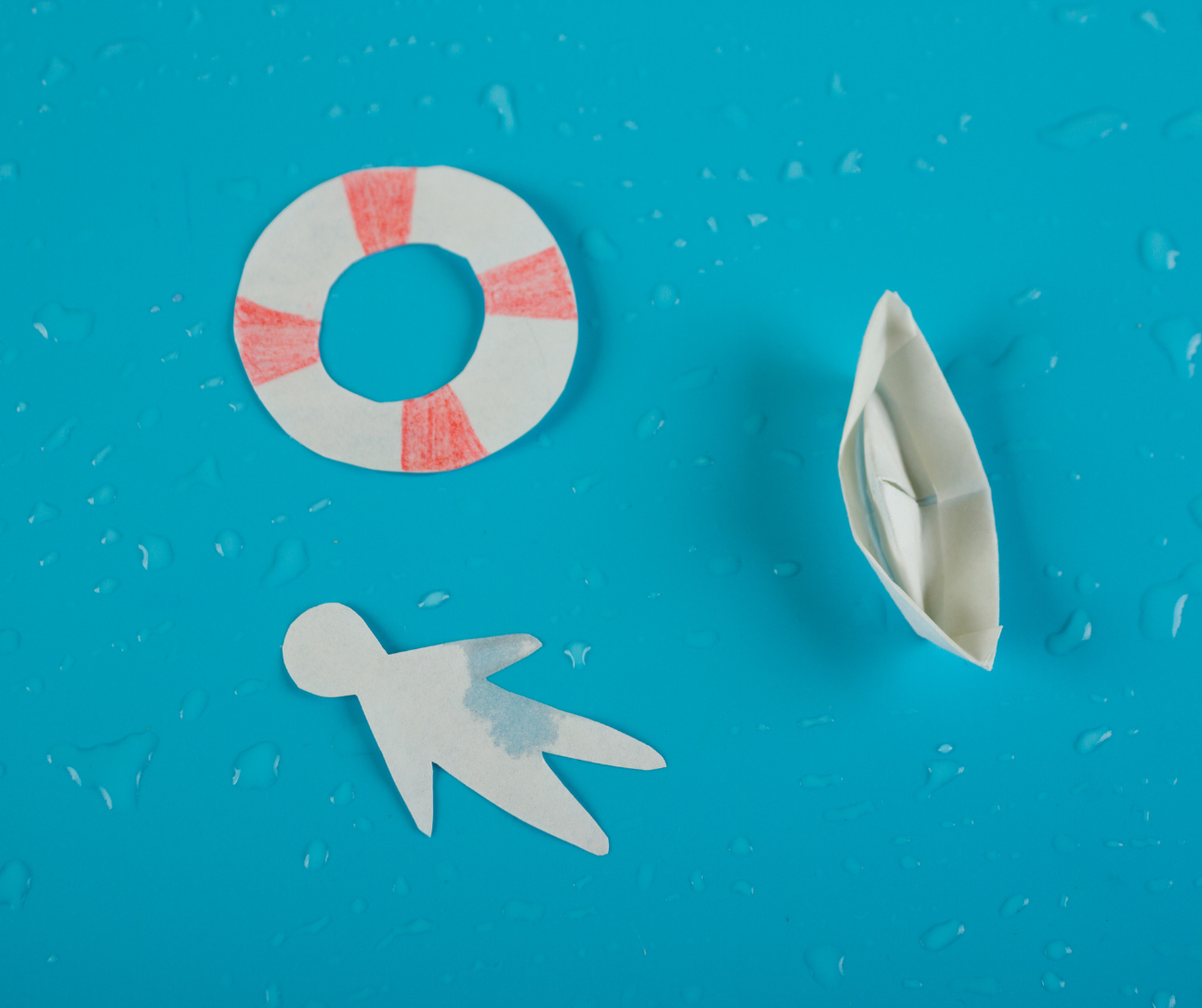
Sometimes, it’s possible for multihulls to jerkily gain speed and sharply slam on the breaks. In such a case, crew members can easily lose their balance and even fall overboard. Quite often, there is no guard railing on the boards of trimarans (obviously, it’s useful to set up a safety fence). Of course, the lack of heel, less sheering and less pitching, as well as an increased working area, provide the crew with greater safety. Guard railings with a minimum height of 60 cm and a bottom rope positioned no higher than 40 cm, a toe rail, a non slid deck, rational placement of handrails, a longitudinal safety rope and safety harnesses reduce the risk of falling overboard. The leeward shrouds and stays on flexible-spar multihulls often sag, so it’s better to not hold on to them. Currently, electronic ways of signaling in case of falling overboard are becoming more and more popular. Some devices are so advanced that they can automatically stall the motor or go into the reverse. Of course it’s up to the owner of the boat or skipper to decide on their applicability. However, you should never rely on the reliability of these devices. There’s an old rule that still holds true:
“A hand for safety, and hands for work!”
If someone falls overboard against all precautions, then you have to apply the following order of actions:
- marking
- stopping
- searching
- lifting
- rescuing
Marking
First of all, it’s necessary to mark the place of the fall of a person on electronic navigation devices. For this, there is a special noticeable emergency button on almost every boat.
Next, you need to drop an emergency buoy with a self-igniting signal light and a flag on a long rod. After that, drop the life jacket on a long light halyard. And then, signal using GMDSS.
Stopping
Give an alarm. Stop the boat by, for example, bringing it to the wind. Shorten the sails and start searching under the motor. But it’s better to keep the sails and maneuver under the motor. You should find out which is better in advance — during your training. Powered multihulls maneuver better than yachts, especially in case of foul weather.
Searching
Assign one of your crew members who won’t take his eyes off the man overboard. This person should be liberated from any other work. It’s almost impossible to find someone among the waves, especially if you lose visual contact with them. You should restore the path and speed of the boat in your memory from the very moment you’ve lost eye contact with the one who fell overboard.
The coordinates that get saved after clicking the electronic navigator's MOB button will provide you with the direction for search. But it’ll just help you start the search itself. The natural drift of a person fallen into the water will be unpredictable.
Next, you have to explore the proposed site of the accident. Fortunately, a lot of navigation devices are provided with the "Track" function. You can find the true position and the true course over the ground, as well as coordinates of the target, and accurately determine the offset values for each tack. If you have an autopilot on your yacht, then turn it onю It’ll help you hold the course more accurately than a stressed helmsman.
If the search doesn’t allow you to find the victim, you should immediately call for help using the radio or fire the red signal flare. If you’re in the situation when you have to move away from a man overboard, then you must locate (track down) them anyway.
When a person in the water is really lost, it’s completely wrong to circle randomly with an empty hope of finding them.
So how do you start a targeted search? In addition to precise navigation, correct course keeping is also required. If there is a chance, the distance flown counter should be adjusted to “Zero”, and you should reverse the course under the motor to systematically, lane by lane, explore the sea area where a person fallen overboard could drift. The navigator allows you to determine the course, as well as length and width of the lanes. The width depends on the visibility. Under average daylight and seaway, it should be no more than 50 m.
From time to time, you should turn off the motor to hear calls for help or whistling. When you can’t find a person who fell overboard on your return way, you should start searching using a “spiral” rectangular maneuver. But it can only be performed under the motor.
Lifting
As soon as the fallen one is found, you must immediately lift them on board using any possible equipment: ropes, blocks, hoists, etc. It’s better to prepare all of these in advance. And remember that all of your crew members must have life jackets on.
The large deck area of the multihulls also contributes to the lift of people who fell overboard.
Rescuing
Now it's time to apply medical rescue methods. For multihulls, a person who fell overboard is rescued in the same way as for traditional keel yachts.
The only difference is that multihulls move further away from the accident site due to their speed, so the search becomes more difficult. (But in this case, the timely response when rescuing and marking the accident site are way more important).
Multihulls drift faster downwind. These boats have many individual peculiarities — in general arrangement, convenience of operation on the deck, equipment, speed, pitching, etc. Therefore, it’s very important to be well oriented on your multihull boat. You need to pay special attention to training your crew if the search and rescue of its members are taken into account.
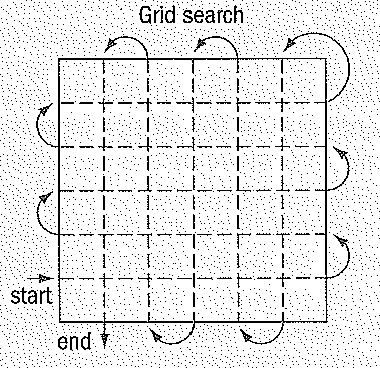
Here's a scheme of movement to search for someone who has fallen overboard. After shortening the sails, you should reverse the course and go under the motor to the proposed site of the fall. Next, it’s necessary to turn in the direction of the probable drift of the man overboard and go in a parallel course, “cutting the lanes into squares”. By implementing such a scheme, once we found a person — even after twenty hours of search.
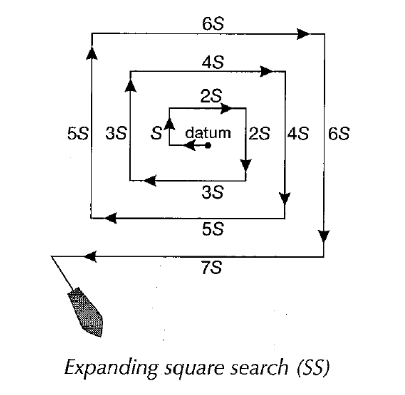
When a man overboard is lost on the reverse course, a rectangular spiral search is usually used. The length of the first rectangular segment should correspond to the largest distance of the search course (with a segment being 50 m, each side track is also 50 m). The length of the second step is doubled, while the third step is tripled, and so on.
Approach tactics
When steering the multihull and approaching a fallen overboard, the main difficulty is that the boat quickly loses its speed and, consequently, its controllability. When tacking, the boat badly goes into upwind circulation. Therefore, sometimes you have to speed it up again. Meanwhile, you can lose sight of a man overboard and may not find them again. So it’s better to shorten the sails and maneuver under the motor, especially on a great seaway. Before turning the motor on again, make sure that the sails and rigging are out of the water and nothing can wrap around the propeller.
There is one more way to approach a man overboard. You should go from a fallen one and try to drift towards them downwind.
Ultimately, you can make a circle around the man overboard, towing a long rope with a floating horseshoe at the end, in order to capture the fallen one in the loop and lift them up onto the board. But there is a danger that the rope may move towards the propellers, and/or the loop may tighten too much when the speed of the boat is too high.
Lifting a man onto board
For multihulls, lifting a person onto the board is extremely difficult due to the sharp pitching and the bobbers hitting the waves. Such fluctuations may cause extra injury to the victim. It’s best to bring the boat downwind, and the victim to the stern, where the ladders are placed (for many multihulls). If the victim is incapacitated, then you need to attach some kind of halyard or long tackle to their life jacket and lift up after that. It’s better to take care of this in advance. For example, you can install special hoists on standing rigging.
Self-help
To improve the chances of rescuing a man overboard (including yourself), you should take care of the following in advance:
- work in a life jacket
- have an automatic alarm on board
- have a self-igniting flashing light on your life jacket
It’s also recommended to have:
- a whistle with a trill that can be used in water
- pocket flare
- paint that stains water at the place of the fall
Yachtsmen can’t eliminate the chance that one day they can see the transom of a boat moving away from them. The question here is how to behave?
First of all, you need to keep calm. Don’t panic. Remember that the yacht can be moving away quite quickly. Therefore, some space is necessary for it to perform the rescue maneuver.
Second, move as little as possible. You should take the “embryo position”: put your arms on your chest and pull your knees up. Don’t swim, since it’ll help you reduce body heat loss and save lots of energy. Wave your hands only if there is a chance to be seen.
Remove all heavy objects out of your pockets, but never take off your clothes. Initially, it creates additional flotation, because of the air in it. When getting fully wet, your clothes significantly decrease the flow of water heated by your own body to the cold surrounding water. It should also be mentioned that wet clothes are hardly heavier than the water itself.
Remember that it’s necessary to stay near the dropped rescue signal tool. And it's way better to attach it to you. Before the onset of darkness, it’s good if you manage to get to a flashing buoy. It’ll give you a good chance to be found.
You should never try to catch up with a yacht or swim towards it.
Never give up hope to be rescued. This will allow you to survive and be found even after several hours. If you climb aboard, it’s better to do it from the stern, but try to avoid possible hits on the hull.
Lifebuoys and life-saving appliances
Both traditional round lifebuoys and strap-shaped lifebuoys can’t be considered as reliable life-saving appliances. Numerous tests have proved it. However, they are still in use on yachts. You can easily find them on the market.
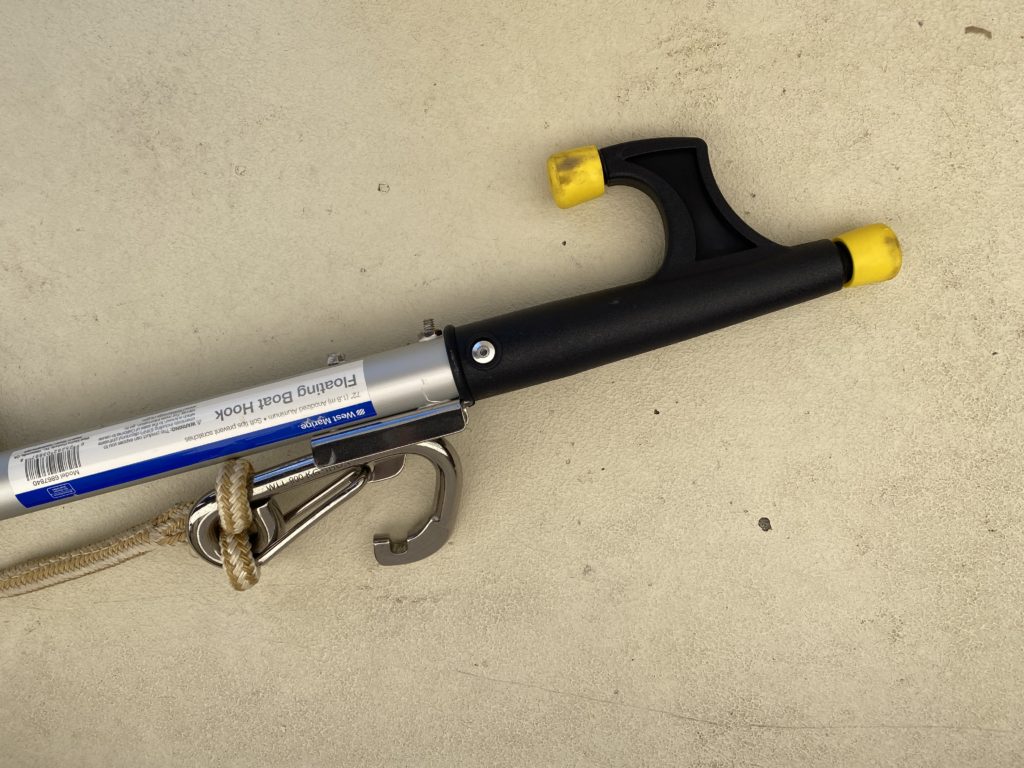
Sea lift. Rescue hoists are fastened with four bolts to the upper shroud at a height of 4 meters above the deck. And from below, they’re fastened to the toe rail or hound. An extra ring holds the boat hook.
Under water, the life jacket must turn a person so that their head and face are up. It must also protect the spine from possible hits. On the water surface, the life jacket must turn a person face up as well. The life jacket also must:
- keep your mouth at least 15 cm above the water
- make it possible for a person to swim for about 30 meters and climb onto a raft or boom with a height of 30 cm (from the water level)
- protect you from the flow of water in the abdomen area and (desirably) under the armpits
- protect your head from the wind
- be provided with built-in loops so that rescuers can lift you from their boat
- have a whistle, self-igniting light, metal locks
Such a life jacket was developed and tested at the Leningrad Institute of Water Transport. It doesn’t create any difficulties when working on board. Everything else is oher safety tools widely presented on the market.
Effective and reliable life-saving appliances are those that use rigid, closed-cell foamed plastics. Only such materials comply with the requirements of the Safety Regulations. After a simple and convenient fastening to a safety harness, these appliances turn a person back down and keep their head above the water. A pair of such floats should be at helmsman’s hand on the stern pulpit, at lifelines (handrails) or on the backstay, but without the “light-minded” so-called “strong fastening”. In case of an accident followed by a nerve-wracking, it takes too much time to release the rescue tools from the fastenings. If so, the best solution may be a catapult. It reacts quickly enough and makes it possible to deliver a rescue float directly to the hands of a person who fell overboard.
Safety Regulations require one of the tools to be equipped with a line of at least 20 m long or using an alternative in the form of a lifting rope. The last one is a combination of a lifebuoy and a harness with a rope from 35 to 45 m long, that is unwinded from a reel in a box attached to the stern pulpit. If necessary, this rope can be used to lift rescued people onto a helicopter.
Additional equipment
A whistle with a trill is usually considered to be a standard life-saving appliance. A small floating anchor allows you to reduce the drift. It’s not easy to throw a lightweight foamed plastic lifebuoy to a man overboard, especially if you do it against the wind. And it’s even more difficult to swim and reach such a lifebuoy that drifts downwind at high speed. Many people prefer to have old-fashioned cork heavy lifebuoys on board. A signal light with a working battery (including the one that works when sea water enters it) must be attached to the life jacket. It’s even better to have an electronic flashing light with a frequency of 40-60 flashes per minute. Under favorable conditions, such lights can be seen at a distance of several miles due to the contrast against the background of dark clouds.
Luminous signal buoys and marking buoys
For cruising and boat racing, Safety Regulations usually require having a rescue buoy on board to determine the site of an accident. A reliable float made of rigid closed-cell foamed plastic is provided with a whistle, a floating anchor, and a self-igniting light on a flag pole. This pole must have a constant length or be adjusted to its full length within no more than 20 seconds. It’s fastened with a 3 m floating rope with a rescue buoy, has sufficient length and ballast to keep the flag at a height of at least 1.8 m above the water.
Usually, telescoping plastic or metal tubes, held in an upright position by ballast, with a yellow, red or orange flag are available for sale. JOR regulations require a flashing light with a frequency of 80 to 120 flashes per minute to be placed at a height of 3.2 m above the water surface. Luminous buoy or electronic flashing lights give a chance to find a man who fell overboard even at night time. In the daytime, the accident site is usually marked with orange smoke (from a smoke bomb), which, unfortunately, gets quickly dissipated.
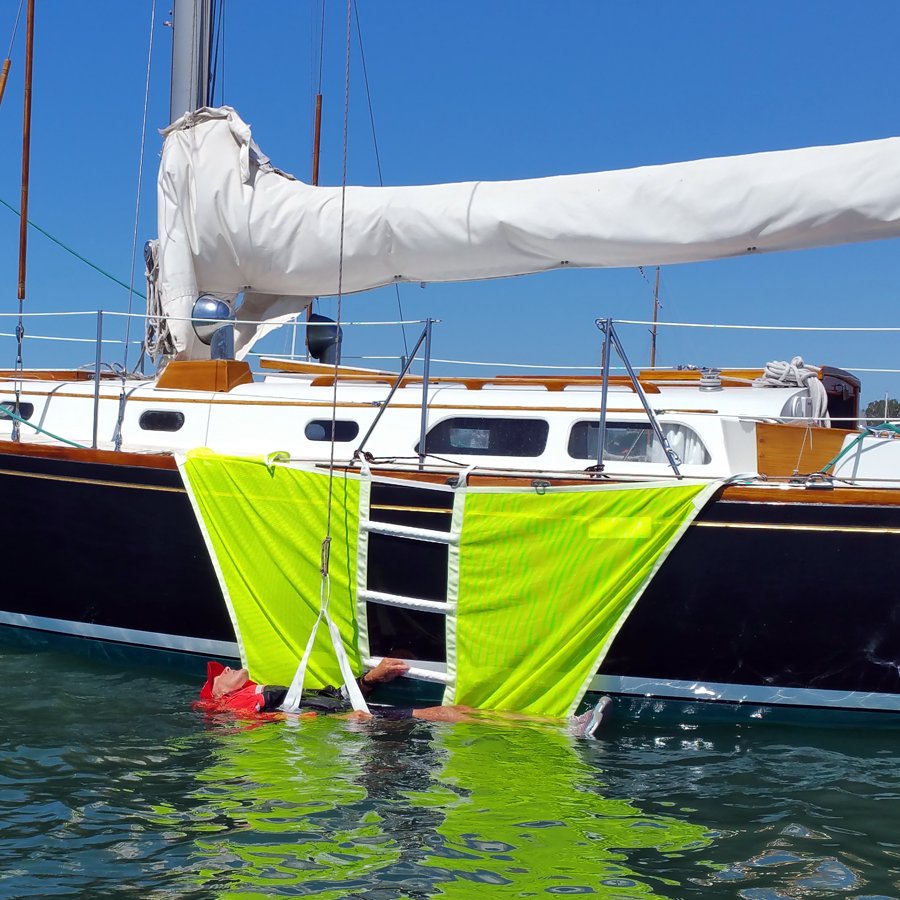
Here’s an emergency ladder connected to the pulpit. The life jacket with a signal light is fastened to the pulpit as well. A telescopic tube with a fire burning from 10 to 48 hours is fixed on the backstay.
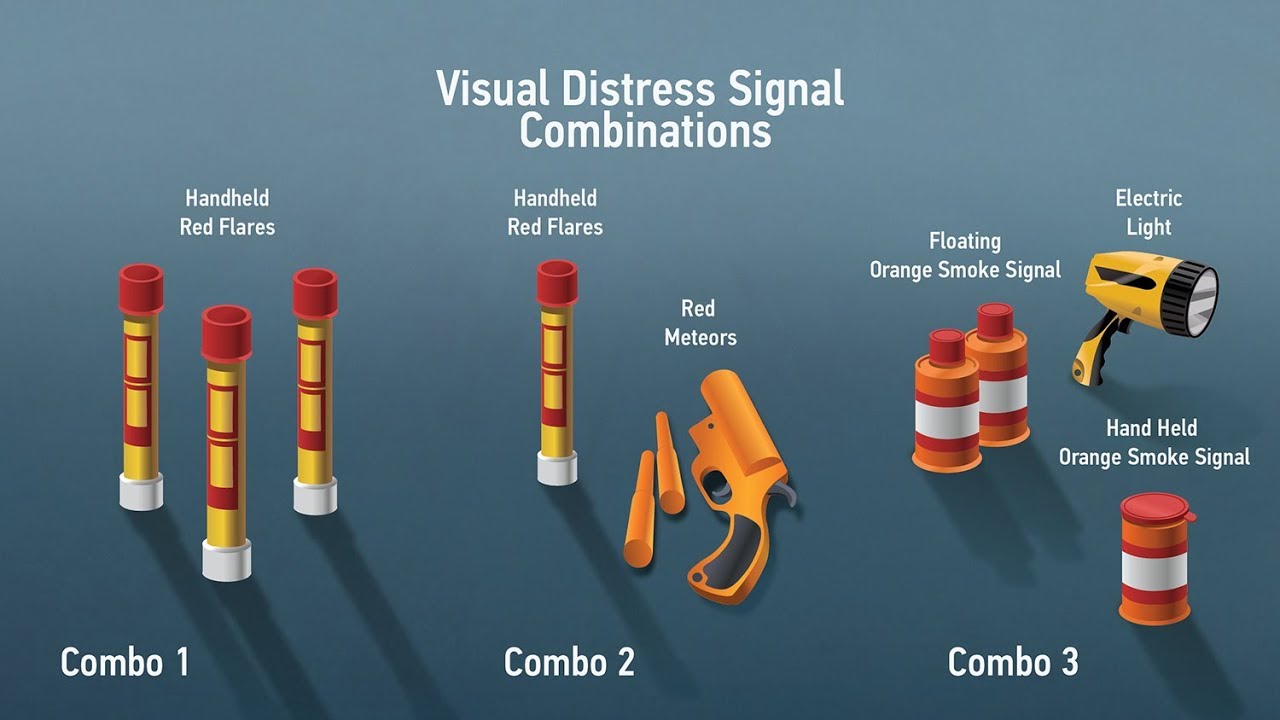
Distress signals for areas with categories from 2 to 4. Container contains the following: 4-caliber flare gun — 1 pcs., red flares — 4 pcs., red parachute flares — 2 pcs., red hand flares — 2 pcs.
Approaching the injured boat
The approach to the multihull is performed in the same way as to the keel yacht. However, you should take into account that multihulls are more vulnerable and more fragile than keel yachts. Therefore, keep a sufficiently large distance from them and approach them with great caution. Multihulls drift quite quickly and constantly change their position.




